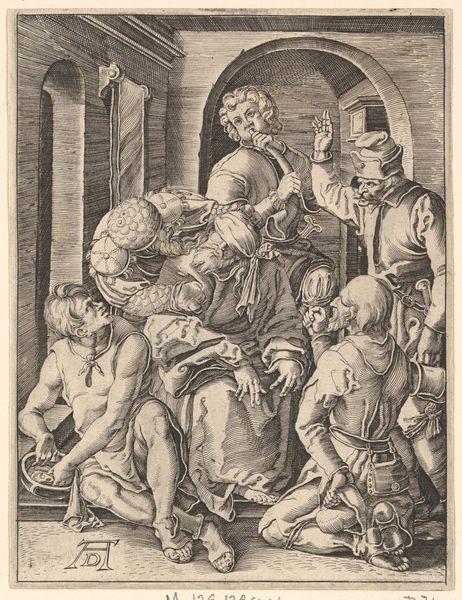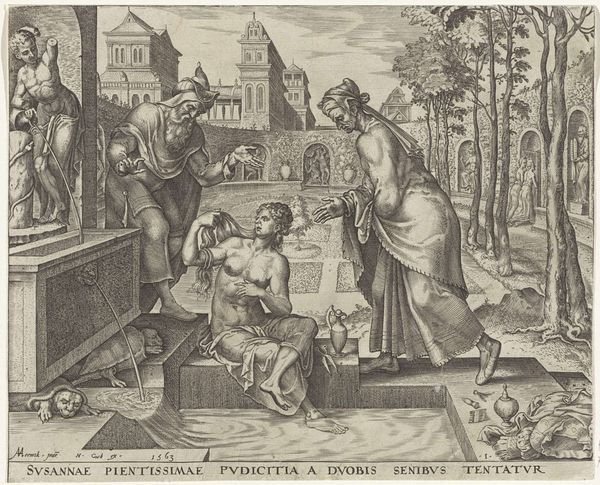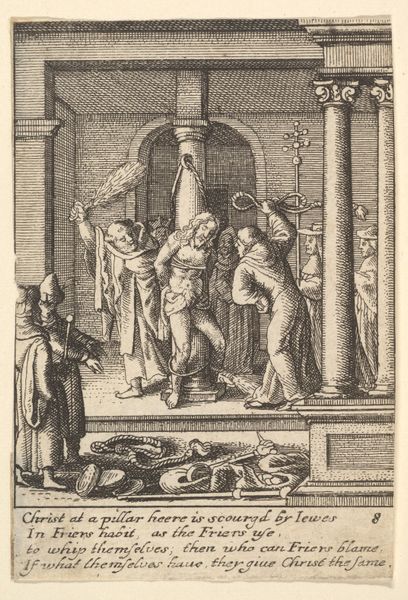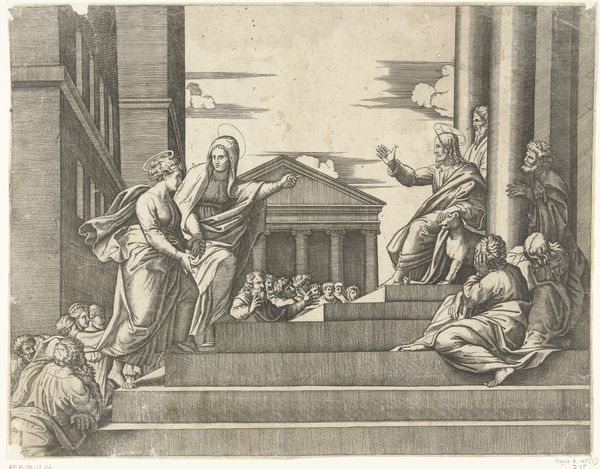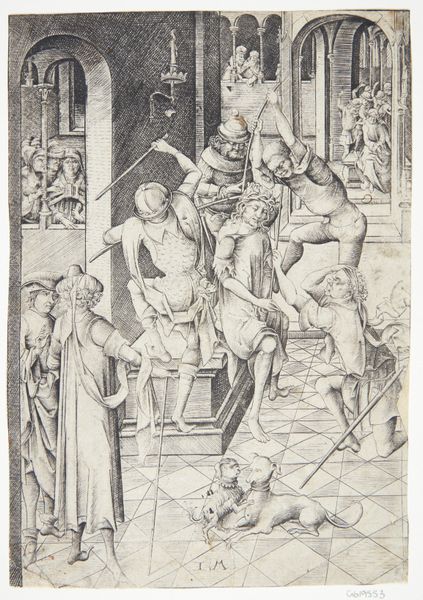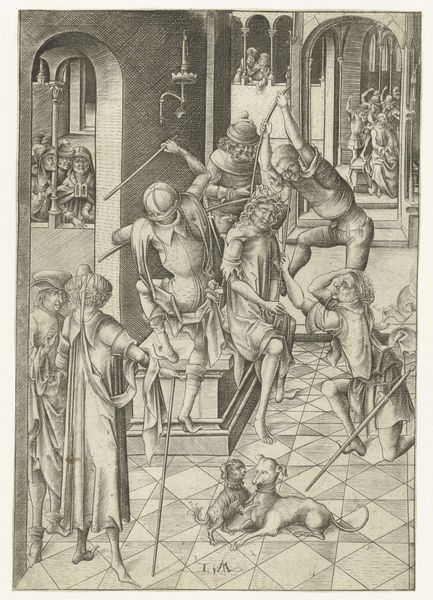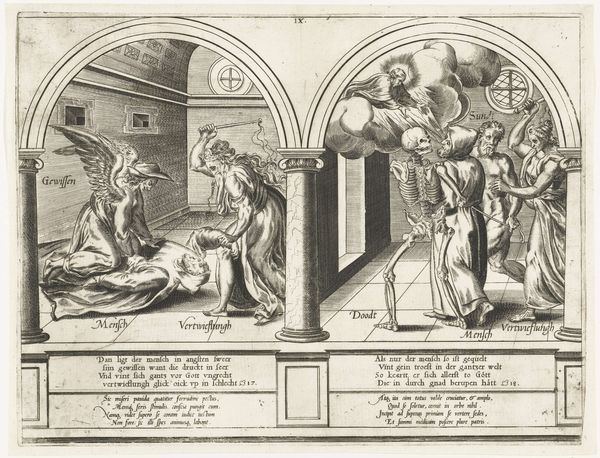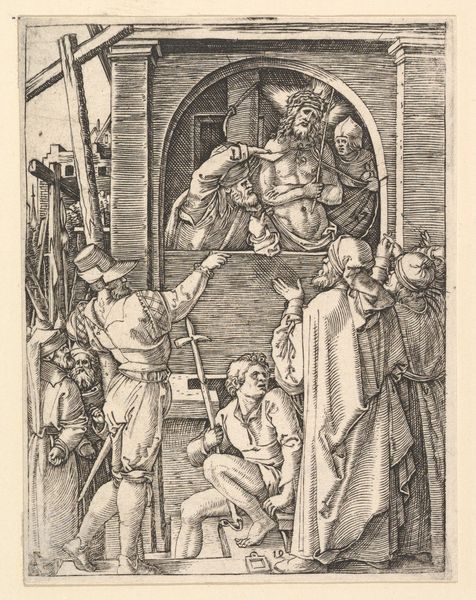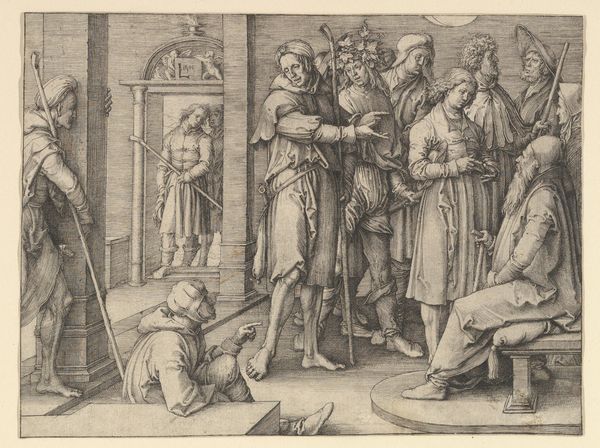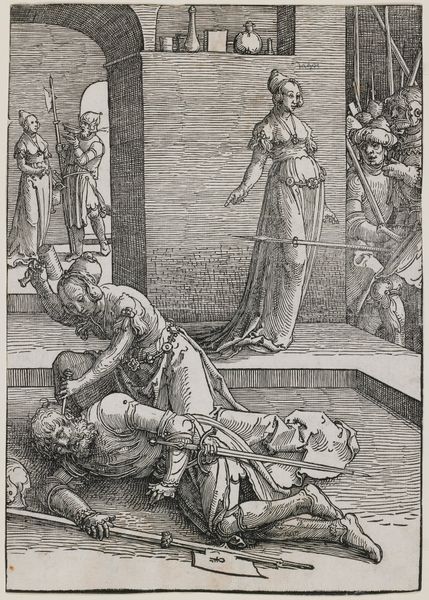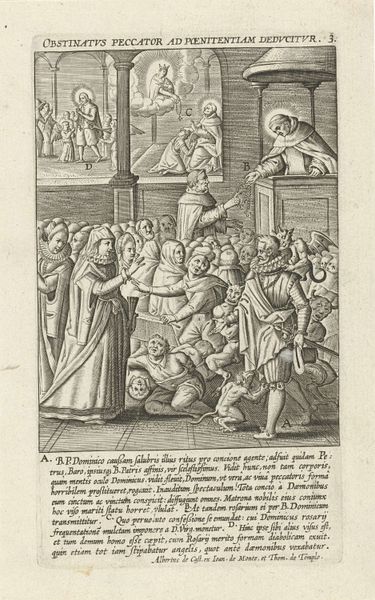
print, engraving
#
narrative-art
#
baroque
# print
#
old engraving style
#
caricature
#
figuration
#
line
#
portrait drawing
#
history-painting
#
engraving
Dimensions: height 205 mm, width 241 mm
Copyright: Rijks Museum: Open Domain
Curator: Editor: We're looking at "The Beheading of John the Baptist," an engraving by Nicolaes de Bruyn from sometime between 1581 and 1656. The Rijksmuseum holds this print. There's such detail rendered, such an eerie calm despite the violence about to occur... What do you see in this work? Curator: For me, it’s primarily about understanding the social context of printmaking at the time. This wasn’t high art destined for a wealthy patron's wall. Prints like this were mass-produced objects, serving a very different function than, say, an oil painting commissioned by a royal family. Editor: So, it's more about its availability and purpose? Curator: Exactly. Consider the material – an engraving. It suggests a deliberate process, reproducible for a wide audience. It's a technology of dissemination. Ask yourself, who was consuming these images, and what messages were they taking away about power, justice, and religious authority from the subject matter? And, of course, think about the labor involved in creating these prints – who was involved in the production process? Editor: That reframes the work, looking beyond just the figures. So the intent and use, in this medium, makes it more like a medieval meme! Curator: In a way, yes. Consider the act of consumption. These engravings found their ways into books, were tacked to walls. Their visual potency played a key role in reinforcing cultural values within early modern European society. This challenges notions of art that center it on formal aspects or on genius of the individual. What did this perspective reveal about artistic value? Editor: It feels less about "artistic genius" and more about social commentary and the means of communicating that. Thinking about it this way makes it much more relevant to our modern world. Thanks.
Comments
No comments
Be the first to comment and join the conversation on the ultimate creative platform.
